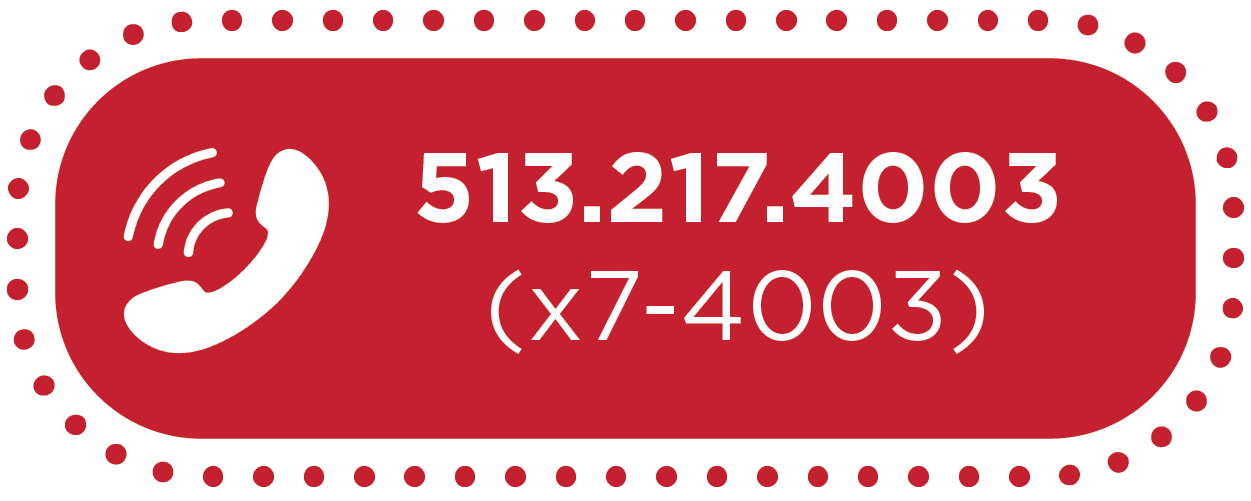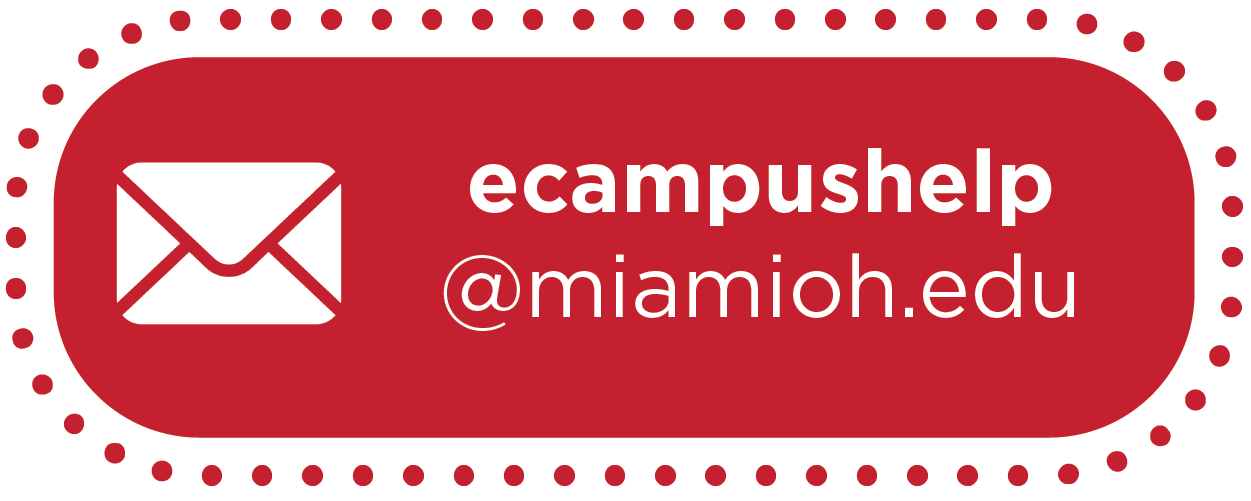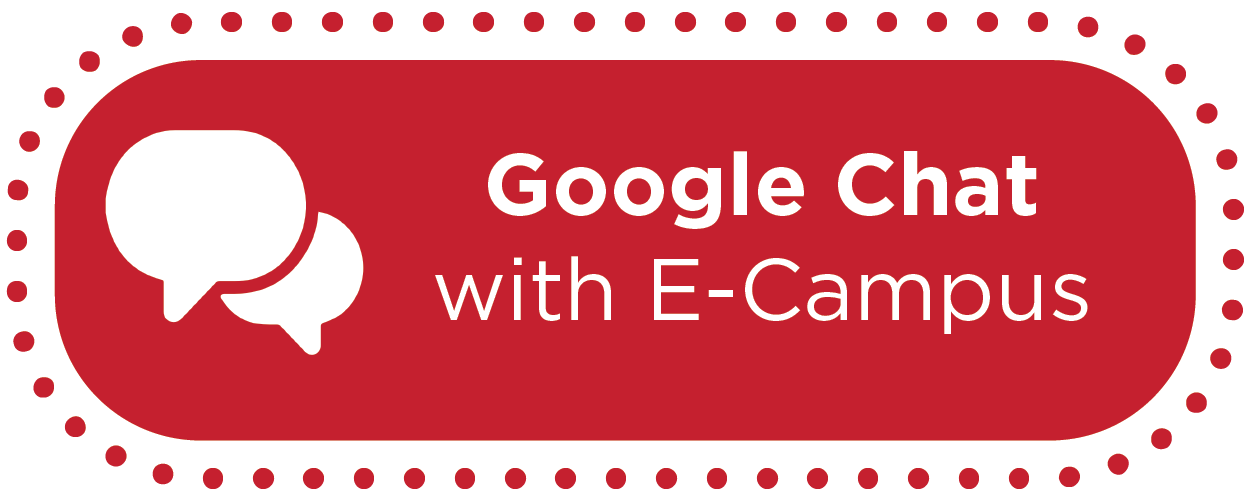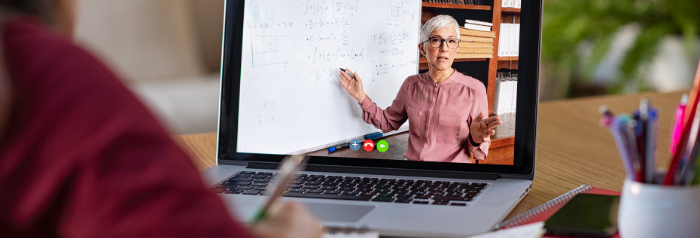
Five Tips for Remote Teaching

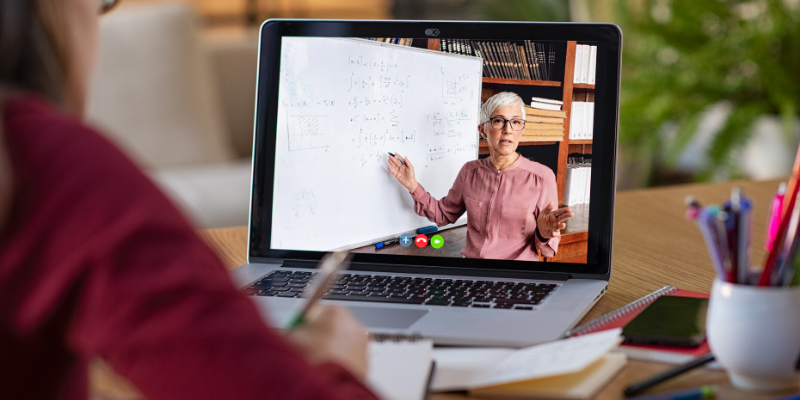
5 Tips for Remote Teaching
We have identified 5 “essential” tips for ensuring continued learning and overall student success within your courses. These topics were selected based on our research into remote delivery best-practices, as well as our empirical E-Campus led research into end-of-term student evaluation feedback for our previously developed E-Campus online courses.
1. Communicating with Students
Students learning remotely don’t have to feel disconnected from the course or the instructor. Regular communication, thoughtful feedback, and timely responses all positively impact student success. There are several tools already at your fingertips for communicating with your students when delivering content remotely. Take a look at the resources below to explore further:
Canvas Inbox
Canvas Inbox is the messaging tool within Canvas. It is a powerful communication tool allowing you to easily send important and timely information quickly and easily. You can send a message to a specific student(s), a specific student group(s) or your entire class. You will receive student responses to your messages in the Canvas Inbox and you can also set your Canvas notifications to send the messages to your Miami Gmail account as well. We recommend that you also share information about adjusting notifications for students, as well, including advising them to enable push notifications to their mobile device for Canvas Announcements.
Canvas Announcements
Canvas Announcements are useful for reminding students of due dates, letting them know when assignments have been graded, providing personal context on topics, and delivering other timely reminders.
Announcements are posted to all students in the course. Announcements can be written and sent throughout the term, or written now and scheduled for later delivery.
There is a Canvas guide for Creating an Announcement in your course. Additionally, the video below provides a guided experience for setting up Canvas Announcements in your course.
There is also a Canvas guide for how to “email” an announcement to all students, designed for those students who may have turned off notifications for course announcements.
Many faculty and students find it useful when the recent course announcements show up on the course Home Page, as another strategy to ensure students see important course information. To post announcements on your course home page, follow the step-by-step guide and video from E-Campus’ How-to: Add Announcements to your Course Home Page in Canvas.
Gmail
Miami is a Google Apps for Education partner and as such, utilizes G-Suite applications. One of the applications is the email service, “Gmail.” The good news is, this is not a new application to learn! If you’ve been accessing your email from your myMiami account, you’re already familiar with Gmail. If not, Google has a Gmail Help Center that provides how-to guides for things like signing in, sending and receiving messages, changing notifications, etc.
Miami University IT Services recommends using the Gmail web app in your browser to check your Miami email. Additionally, Miami’s IT Knowledge Base Gmail category is an excellent source for more information on how to use Miami Gmail.
Google Hangouts Chat
With Google Hangouts Chat you can send instant direct messages and/or start a quick phone conversation using wifi or mobile data to individuals or groups of students through their Miami Gmail account. This opens up a chat box for you to message in. Visit Google’s web page for Starting a Google Hangout to learn more.
2. Meeting with Students & Virtual Office Hours
As you know, time spent meeting one-on-one with students often produces valuable teaching and learning outcomes. Moving out of the classroom and halls and into the virtual course space doesn’t pose a threat to creating these meaningful opportunities. In today’s tech-rich world, you can meet anywhere, anytime! Both Canvas and Google applications offer options for meeting virtually with students.
Recommendations for Virtual Office Hours
Students may worry that ‘remote delivery of instruction’ may mean that you, their instructor and person to whom they turn for help to succeed, won’t be available to offer the guidance and assistance they need. During these uncertain times, students need to know and see that you are still available and ready to assist with questions or difficulties. It is fundamental to the student-instructor relationship and one reason why it will remain important for you to hold office hours.
Best practices:
- Establish through which technology(ies) you will conduct virtual office hours
- You may wish to choose only one (e.g. Webex Personal Room) or multiple (e.g. Webex Personal Room, Google Chat, and Google Hangouts Meet)
- Consider offering virtual office hours at different times. (e.g. Tuesdays 1-2p, Wednesdays 6-7p, Thursdays 10-11a)
- Set, communicate, and keep defined hours
- Be sure to post the hours AND how to connect in your Canvas course site. We recommend adding the information to your Syllabus, posting as an Announcement, and even, creating events on the Canvas course calendar.
Cisco Webex
Note: If you have received a Faculty Notification Letter (FNL) for this section of your course, contact Student Disability Services for required WebEx accommodations.
Cisco Webex remains the University’s top recommended and supported technical solution for video conferencing. Webex makes it easy to collaborate with others. Webex is Miami’s cloud-based collaboration system provided by Cisco Systems that provides a way for people to work together in different buildings, in another city, or across the world. You can even record your Webex sessions so students can view them at a later date. This virtual meeting solution is available to all faculty, staff, and students on all Miami campuses. All Miami faculty and staff can have accounts and create meetings.
To utilize Webex to meet virtually or hold virtual office hours, follow the step-by-step guide and video from E-Campus’ How-To: Host, Record, and Share Lectures in Webex guide.
Additional Webex Resources
- Webex has created several resources walking through the different functions and features: a simple, easy-to-use Getting Started resource, a more detailed Webex Meetings: The Essentials ebook, and a robust Help Center: Webex Meetings resource containing all the information and guides you need to schedule (and record) your first live event
- WebEx offers a built-in feature that allows you to Record a Cisco WebEx Meeting
- Guides to Find Your Recorded WebEx Meetings
- How-to Schedule and Start Cisco Webex Personal Room Meetings with the Cisco Webex Scheduler
- WebEx supports WebEx Integrations with G-Suite (Gmail, Google Calendar, etc.)
Google Hangouts Meet
Google Hangouts Meet is an online meeting tool for video conferences available to all faculty, staff, and students on all Miami campuses through our Miami G Suite accounts. Courses not requiring (D/HoH) accommodation may use Google Hangouts Meet as a video conferencing solution, in the event that Webex is not performing optimally.
To help you get started, visit Regional E-Campus’ How-To: Use Google Meet for Video Conferencing with Students news page.
3. Delivering Lectures
Miami’s University Systems Canvas and WebEx allow you to deliver class lectures virtually: either live through video conferencing or asynchronously through video recording. Given that attendance requirements for students have changed under current circumstances and high demand across MU's video conferencing applications has, at times, compromised their stability, we recommend recording all lectures and class meetings, allowing students to view vital course content on-demand. Recorded lectures also allow students to take their time, write notes, and reflect on the material over time to develop a deeper understanding of core concepts.
At Miami, faculty also have the ability to live-stream lectures using video conferencing applications. Before you get started, you’ll want to make sure that you have a working microphone (built-in or external plug-in such as on a headset) and a working webcam (built-in or external plug-in)
NOTE: It may not be possible for students to attend synchronous, live events under the current circumstances. Live events in which you are facilitating class learning exercises (e.g. lectures, study sessions, small group work, etc) must also be recorded and shared with all of the students in the class so everyone has the opportunity to view the material.
Recorded Video Files
Record Videos using Screencast-o-matic on your Computer
There are many ways to record and share videos with students. Screencast-o-matic is an intuitive, easy-to-use video recording tool helping faculty connect and engage students in meaningful ways across the globe. With Screencast-o-matic, you can deliver lectures, create tutorials, record your screen (screencasting), and provide personalized small group or 1:1 instruction and feedback. And, because it’s recorded, students may watch the video more than once - allowing them to take their time, write notes, and reflect on the material over time to develop a deeper understanding of core concepts. While using a third-party video and screencast recording app may seem intimidating, Screencast-o-matic’s numerous video tutorials make it easy for everyone to get started with recording and sharing video content.
To help you get started, visit E-Campus’ How-To: Record and Share Videos using Screencast-o-matic news page.
Recorder Tool Embedded within Canvas’ Rich Content Editor
You can use the Rich Content Editor to record a video. You can record media for any length of time, but shorter video recordings (< 10 minutes) are recommended. Canvas videos also support caption files. Note: HTML5 video recording only applies to Chrome and Firefox. If you are using Safari, you must use Flash video recording.
The Rich Content Editor is used in features that support the editor (Announcements, Assignments, Discussions, Pages, Quizzes, or Syllabus). That means you can post a video in any of these Canvas spaces. Simply navigate to where you want the video posted, click “Edit,” and engage the video capture feature. To get started, especially the first time, you may find it easy to follow the step-by-step guide found in Canvas’ “How do I record a video using the Rich Content Editor as an instructor?” resource.
Record Videos with a Mobile Device and Upload to YouTube
Many faculty start sharing video files using equipment most familiar to them - their mobile devices. After capturing the video you wish to share, upload it to YouTube and share it from there. All Miami faculty, staff, and students have a YouTube account associated with G Suite.
Start by using your mobile device, such as a smartphone or tablet, to record a video. After making sure you are logged into your Miami G Suite account on your device, upload the video to YouTube following the instructions for your specific device. After adjusting the video privacy settings (we recommend ‘unlisted’), you’re ready to share. You can link to the YouTube video using Canvas’ Rich Content Editor.
You may also find E-Campus’ How-To: Share Files in Canvas from YouTube, Kaltura, and Google Drive news page a useful step-by-step resource for sharing your video content.
Live Video Conferencing
Cisco Webex
Note: If you have received a Faculty Notification Letter (FNL) for this section of your course, contact Student Disability Services for required WebEx accommodations.
Cisco Webex remains the University’s top recommended and supported technical solution for video conferencing. Webex makes it easy to collaborate with others. Webex is Miami’s cloud-based collaboration system provided by Cisco Systems that provides a way for people to work together in different buildings, in another city, or across the world. You can even record your Webex sessions so students can view them at a later date. This virtual meeting solution is available to all faculty, staff, and students on all Miami campuses. All Miami faculty and staff can have accounts and create meetings.
To help you get started, Miami University Regional E-Campus has created a How-To: Host, Record, and Share Lectures in Webex guide.
Additional Webex Resources
- Webex has created several resources walking through the different functions and features: a simple, easy-to-use Getting Started resource, a more detailed Webex Meetings: The Essentials ebook, and a robust Help Center: Webex Meetings resource containing all the information and guides you need to schedule (and record) your first live event
- WebEx offers a built-in feature that allows you to Record a Cisco WebEx Meeting
- Guides to Find Your Recorded WebEx Meetings
- How-to Schedule and Start Cisco Webex Personal Room Meetings with the Cisco Webex Scheduler
- WebEx supports WebEx Integrations with G-Suite (Gmail, Google Calendar, etc.)
Google Hangouts Meet
Google Hangouts Meet is an online meeting tool for video conferences available to all faculty, staff, and students on all Miami campuses through our Miami G Suite accounts. Courses not requiring (D/HoH) accommodation may use Google Hangouts Meet as a video conferencing solution, in the event that Webex is not performing optimally.
To help you get started, visit Regional E-Campus’ How-To: Use Google Meet for Video Conferencing with Students news page.
4. Grading Assignments, Quizzes, & Discussion Boards
While there are innumerous benefits to using Canvas for grading assignments, quizzes, and discussion boards, a few rise to the top. For faculty, Canvas’ powerful SpeedGrader and Gradebook make it easier and faster to grade and provide feedback on assignments than ever before. For students, Canvas makes it easy to understand what’s expected, know what to do, and receive important feedback and scores on performance.
To help you get started, visit Regional E-Campus’ How-To Guide: Set-up & Use Canvas Gradebook.
Note: First, make sure you’ve already enabled your Canvas course grading scheme.
Adding Grades from the Canvas Gradebook
Once you create an Assignment, Quiz, or Discussion in your Canvas course, that activity will appear as a column in your Canvas Gradebook. From there, you can assign grades to each student submission for each assignment, discussion, or quiz
You can manually enter grades in the Gradebook by simply clicking in the cell for each student/assignment and entering a numeric value representing the points the student earned for that assignment submission
Grading in Speedgrader
An easier way to grade assignments in Canvas is to use Speedgrader. Speedgrader opens up a view of your students’ assignment submissions, one at a time, and allows you to enter their grade for it on the same screen
Don’t see one of your Assignments, Quizzes, or Discussion Boards as a column in your Gradebook?
Make sure you’ve selected the right option in the settings to ensure that it is a graded activity:
- Creating a Graded Quiz
- Creating a Graded Discussion (scroll to Create Graded Discussion header)
Special Note on Grading Quizzes:
If you have created a Quiz in Canvas with correct/incorrect answer choices (i.e. with Multiple Choice, True/False, Matching, etc. questions), these questions will automatically be evaluated and scored by Canvas, and the student’s grade for the Quiz will be automatically recorded in the Gradebook.
5. Academic Integrity and Using Proctorio & Turnitin
Academic Integrity is an important concern of every instructor in any course. Although “cheating” does not happen more often in the online environment, the strategies and tools used for prevention and monitoring are different. Proctorio and Turnitin are the two most widely used tools at Miami University and fully integrated into Canvas.
Proctorio Online Exam Proctoring
Miami University uses Proctorio for remote proctoring of high-stakes online exams. Although there is no Proctorio report that unequivocally indicates academic misconduct, Proctorio may assist faculty with promoting academic integrity. Proctorio’s Canvas integration not only creates a secure online testing environment but also makes it easy for faculty to enable it to be used for proctoring any timed Canvas Quiz (aka exam) in any course. Proctorio works within the Chrome web-browser and offers flexible features that may be enabled: such as lockdown browser and recording of video, audio, and/or screen activity.
Should I use Proctorio?
The short answer is: only when necessary.
The slightly longer answer is: only for high-stakes assessments.
To get started with using Proctorio, visit our E-Campus Proctorio Pro Tips, Considerations, and Recommendations website.
Turnitin Plagiarism Framework
Turnitin is a plagiarism detection tool used by educators to quickly identify students who submit unoriginal work. Turnitin effectively checks student papers that are submitted against a multitude of sources. Turnitin's integration with Canvas offers full support for the use of Originality Check, GradeMark, and PeerMark within Canvas. You will need to enable Turnitin on assignments in Canvas. For Step-by-step instructions on how to do this visit the Turnitin Creating An Assignment website.
